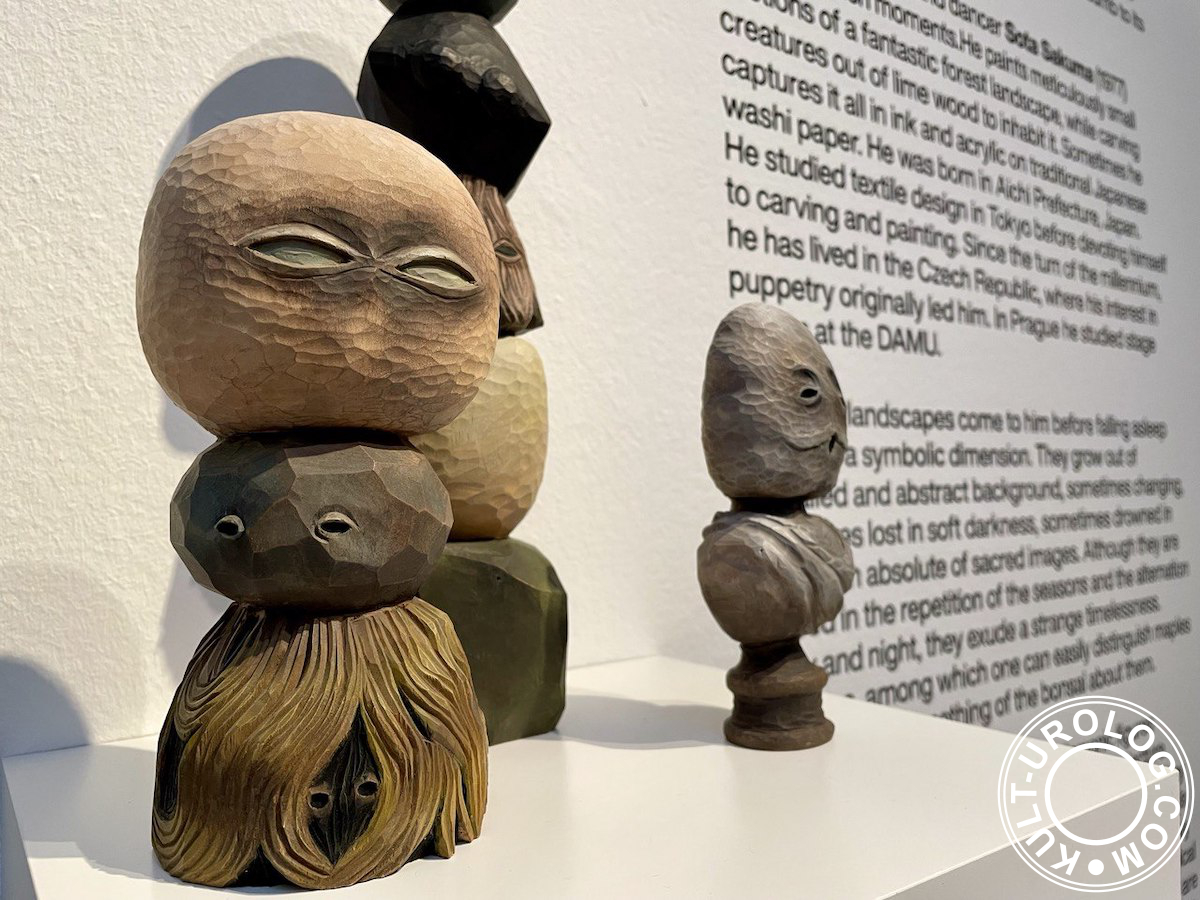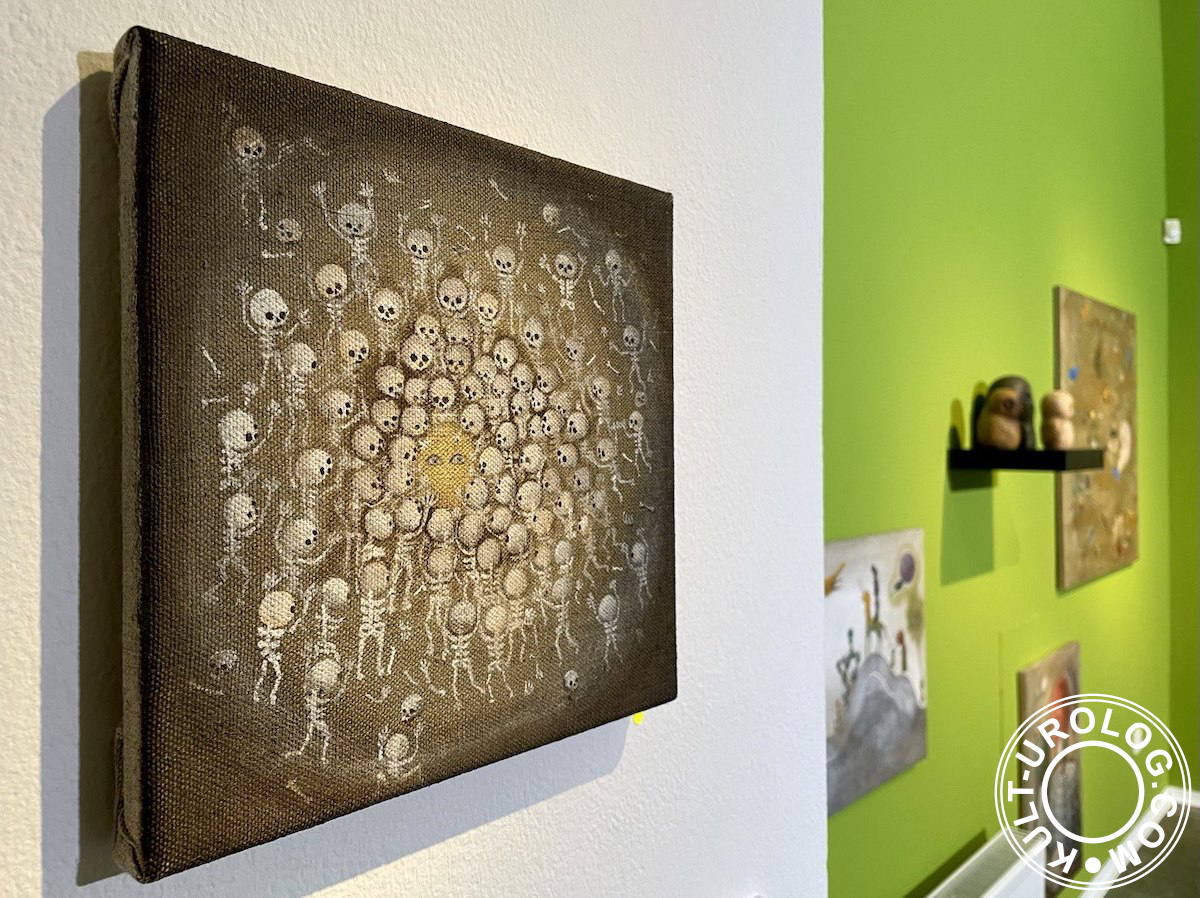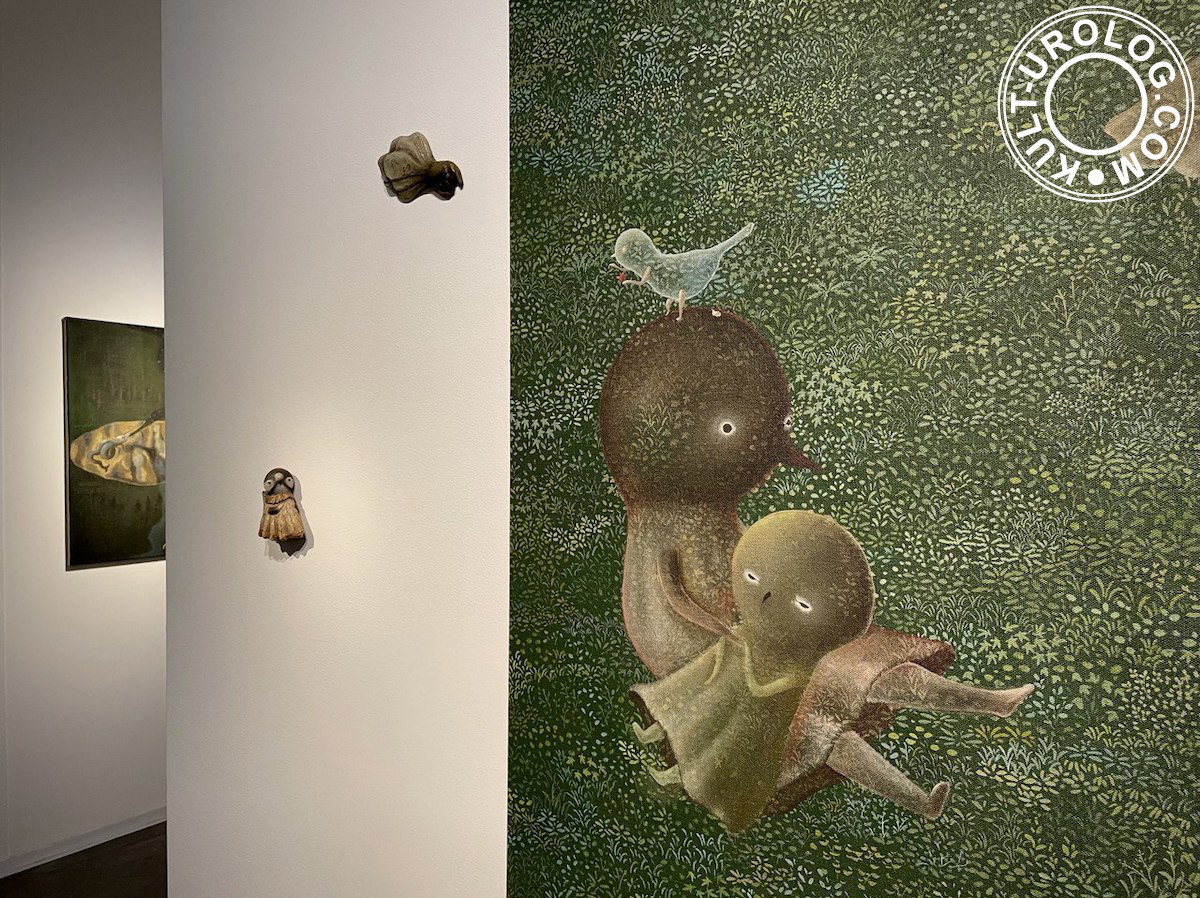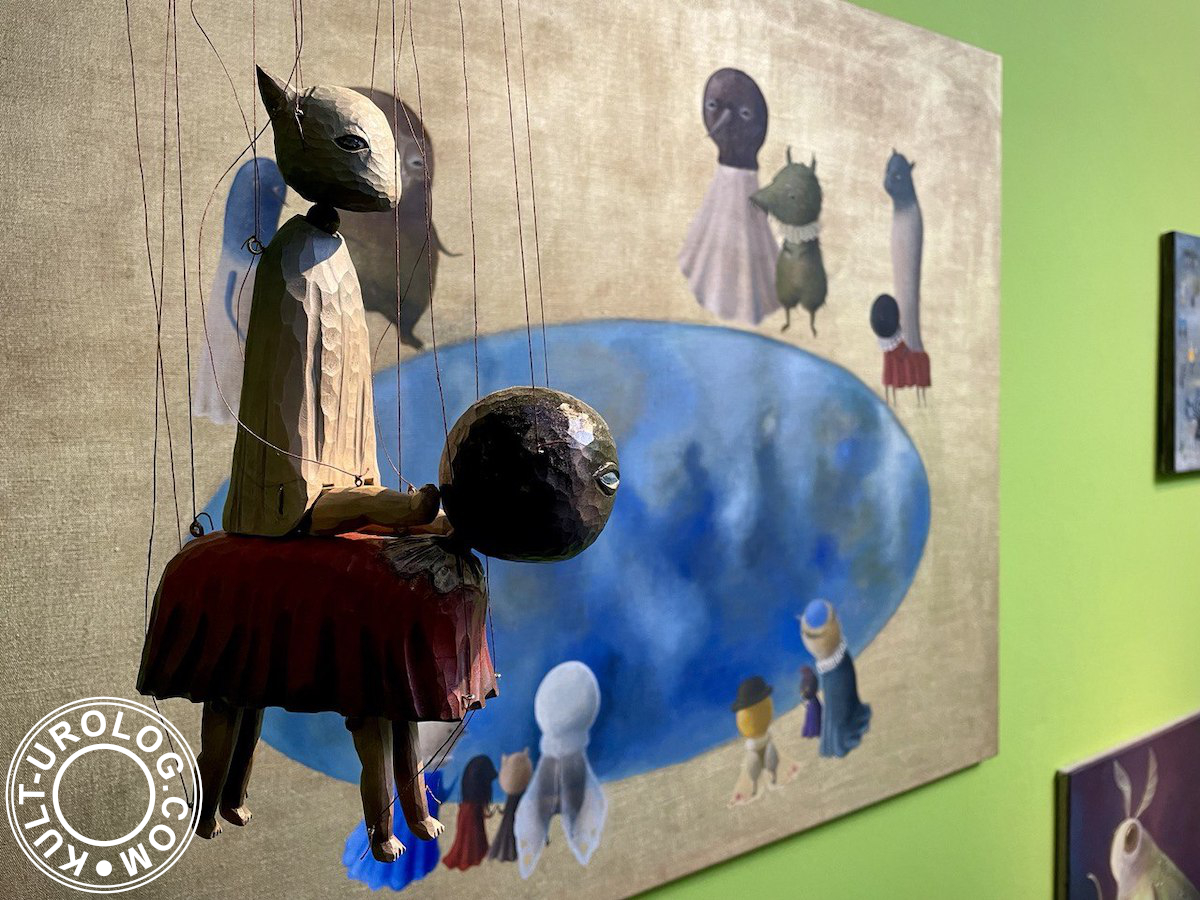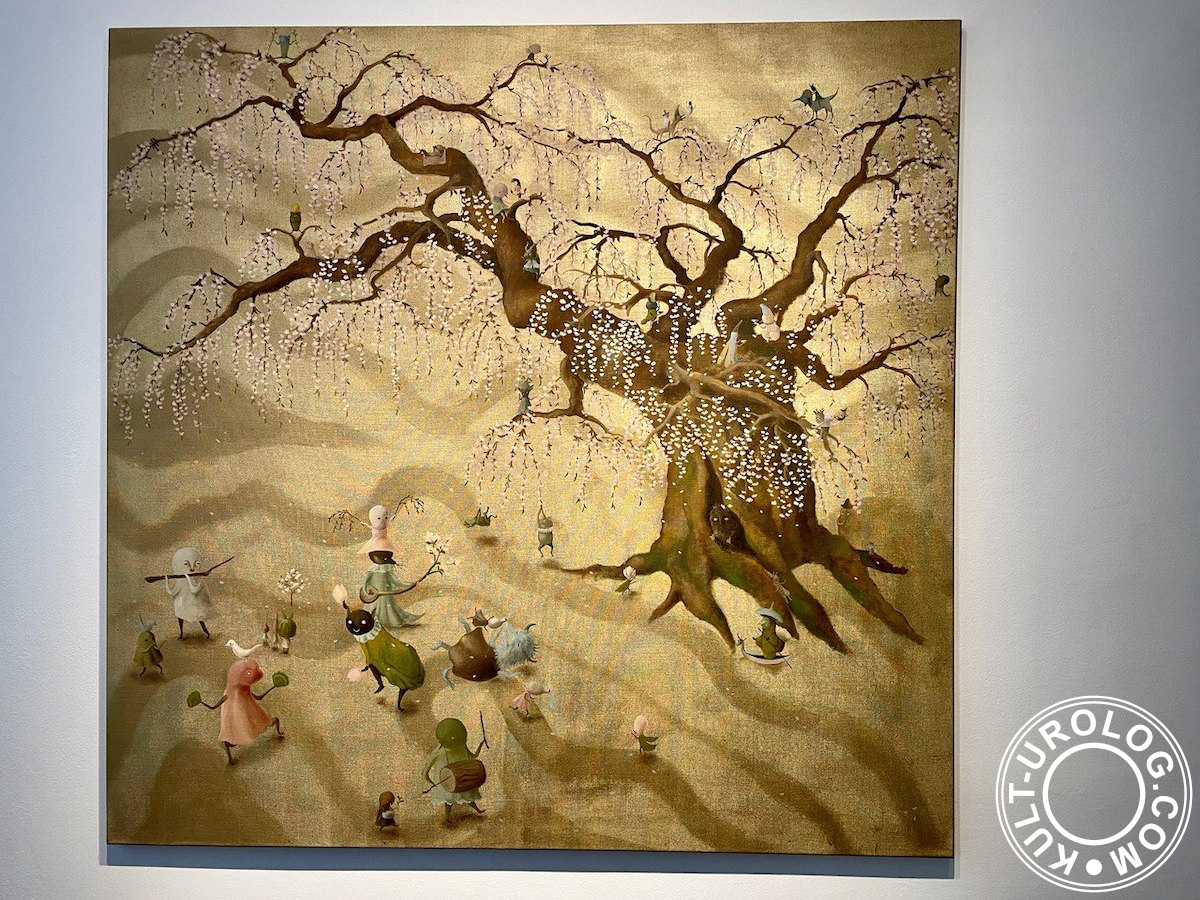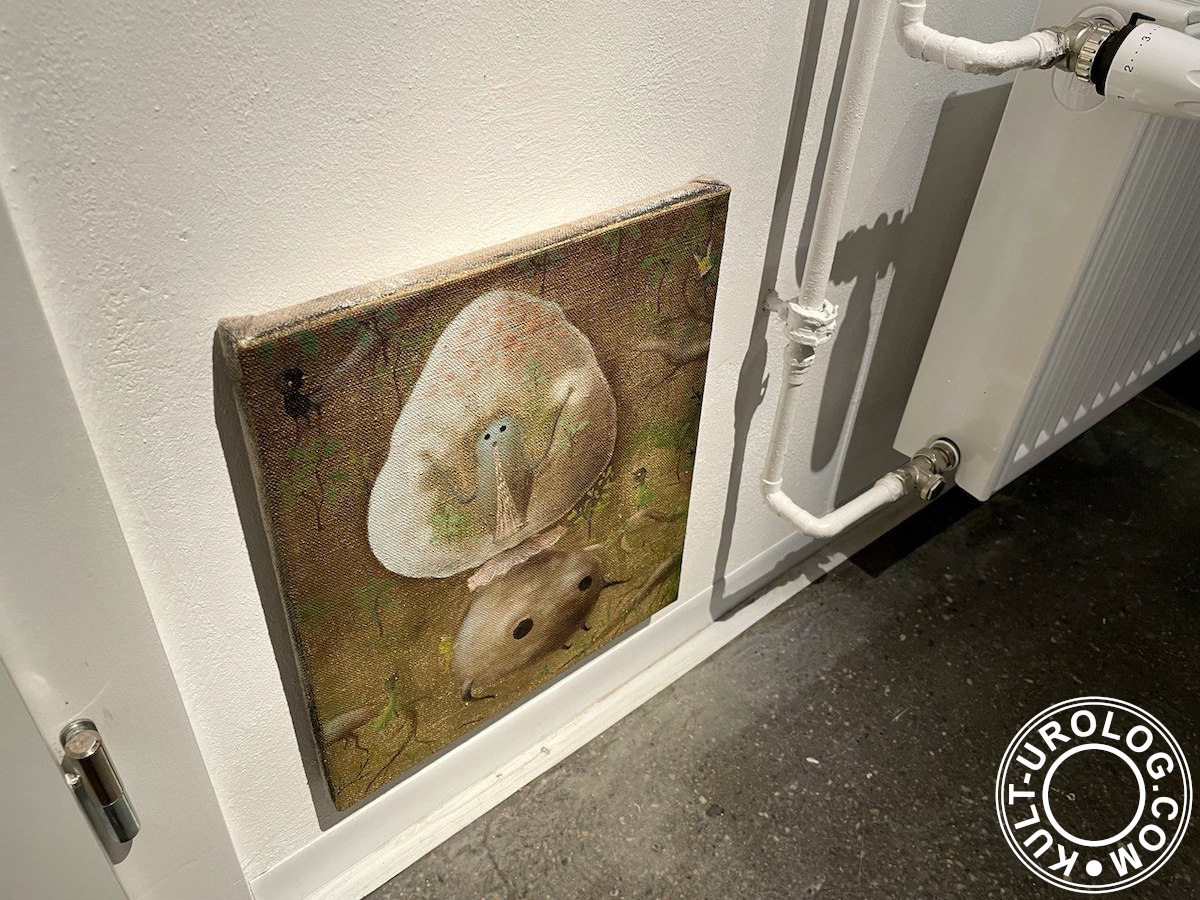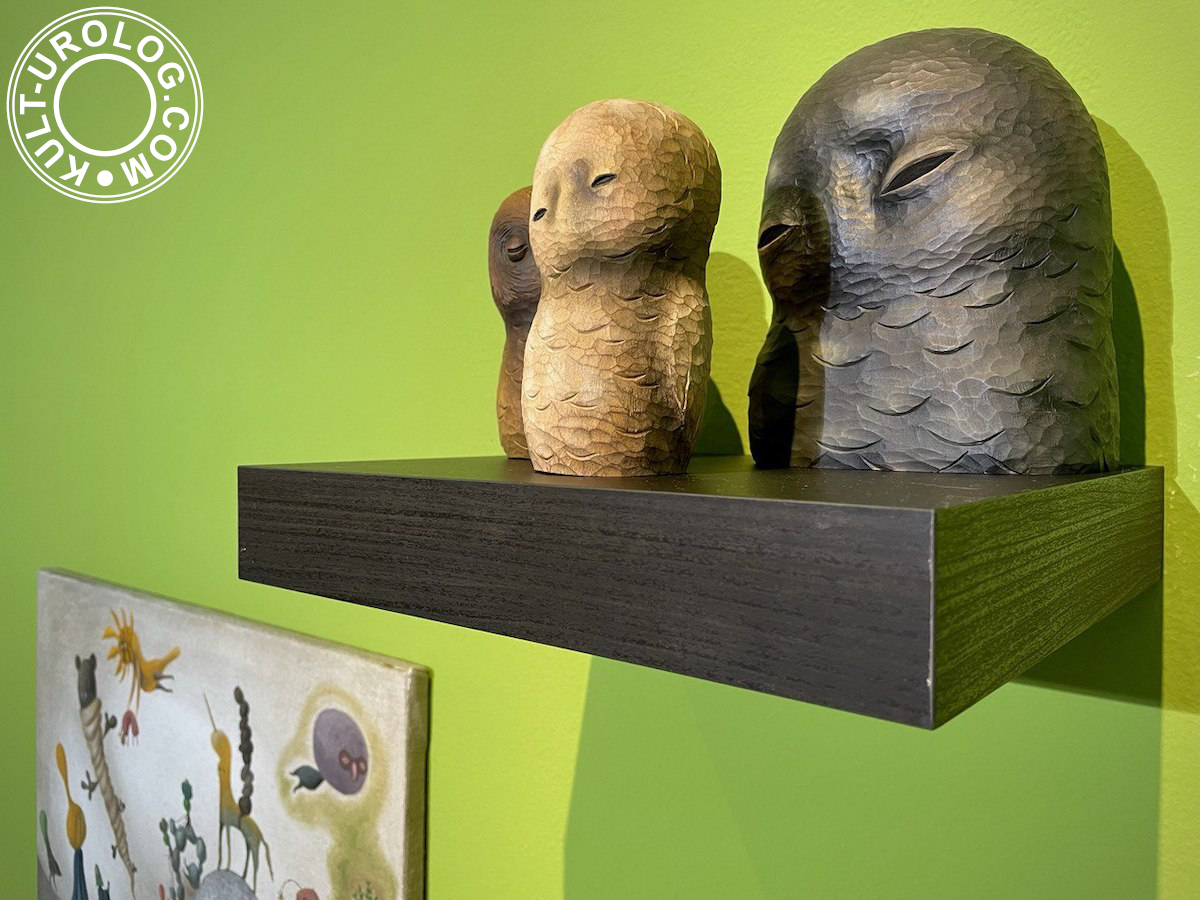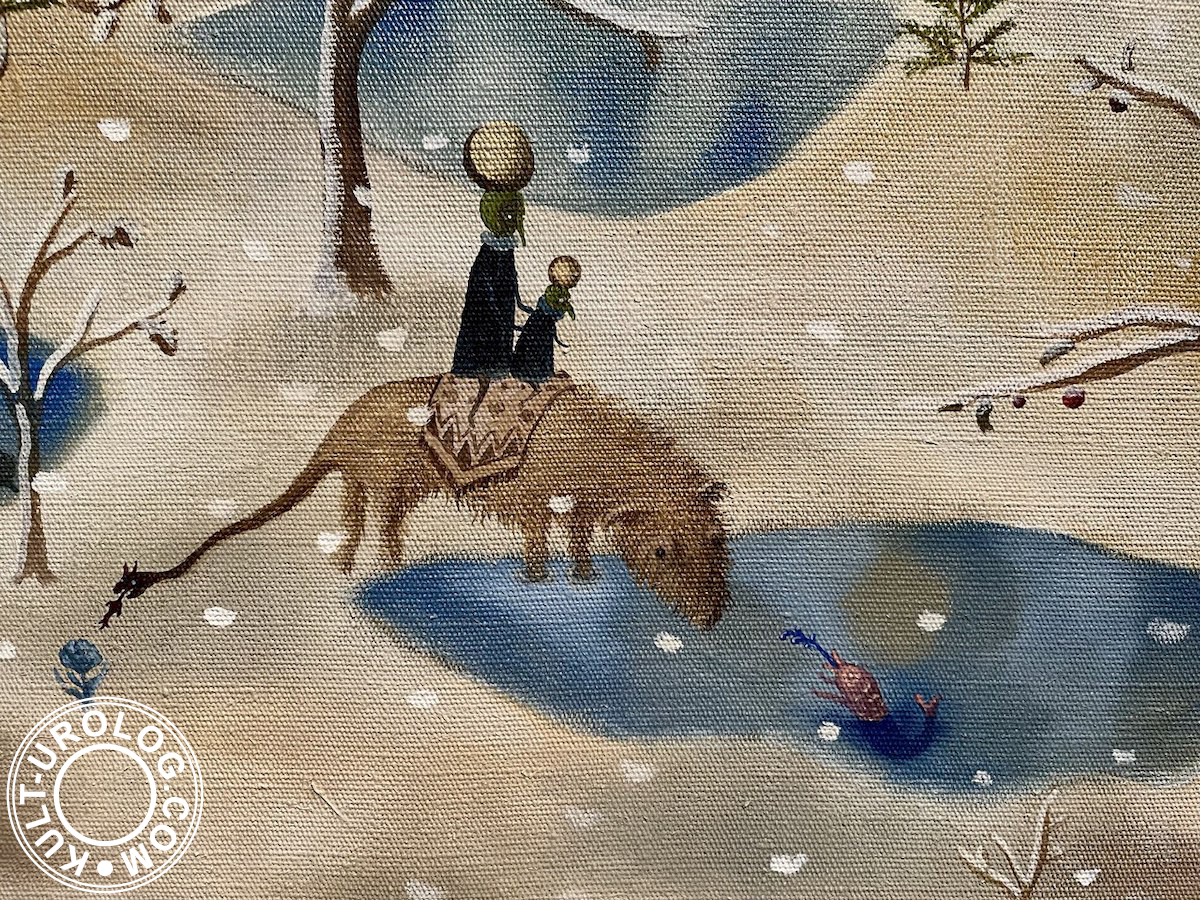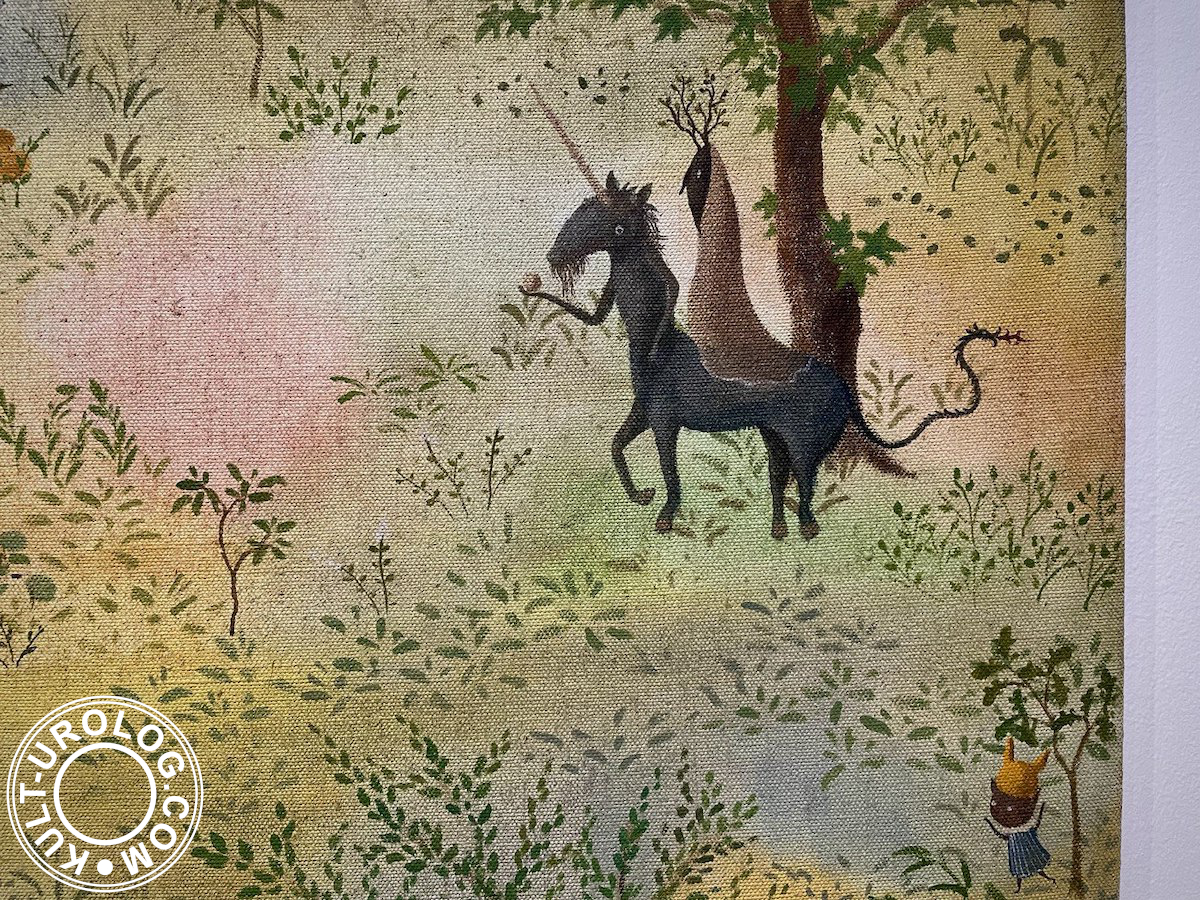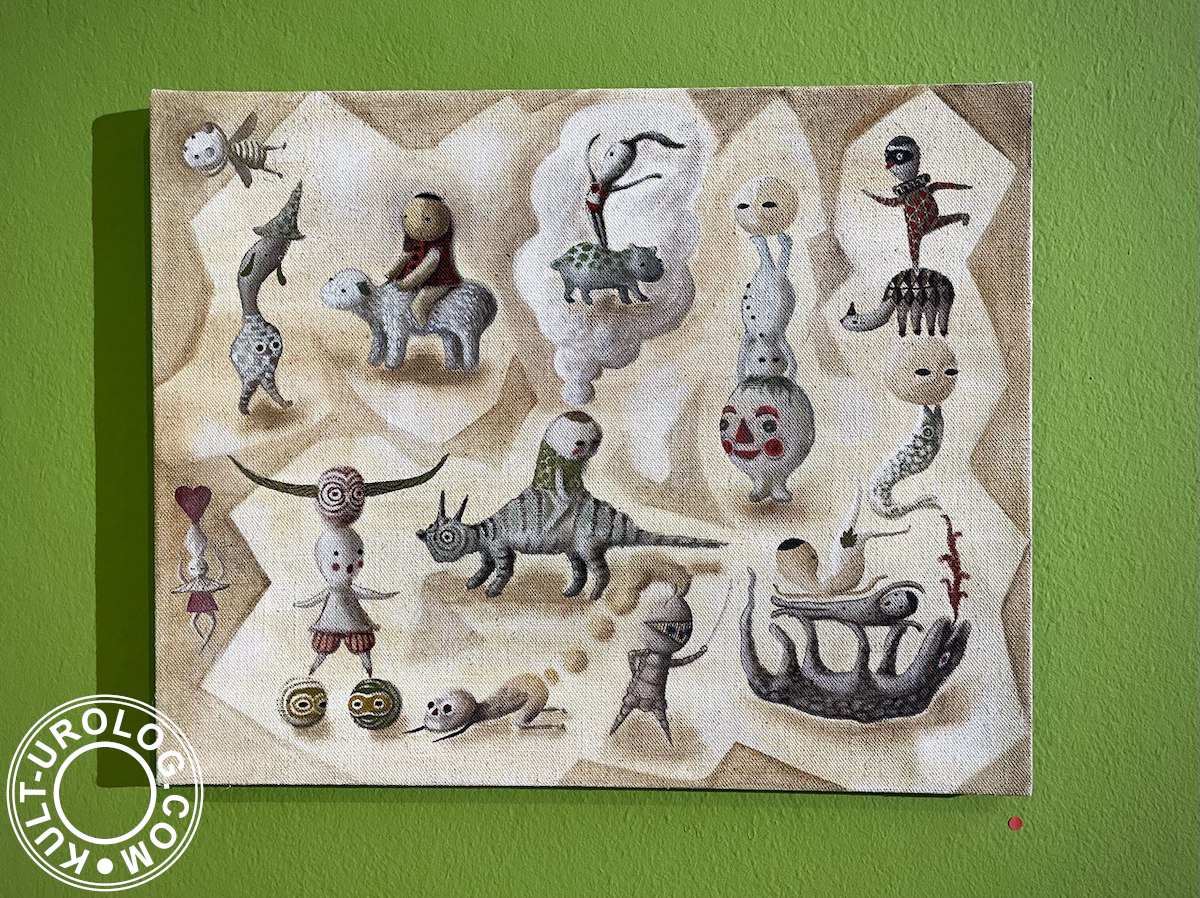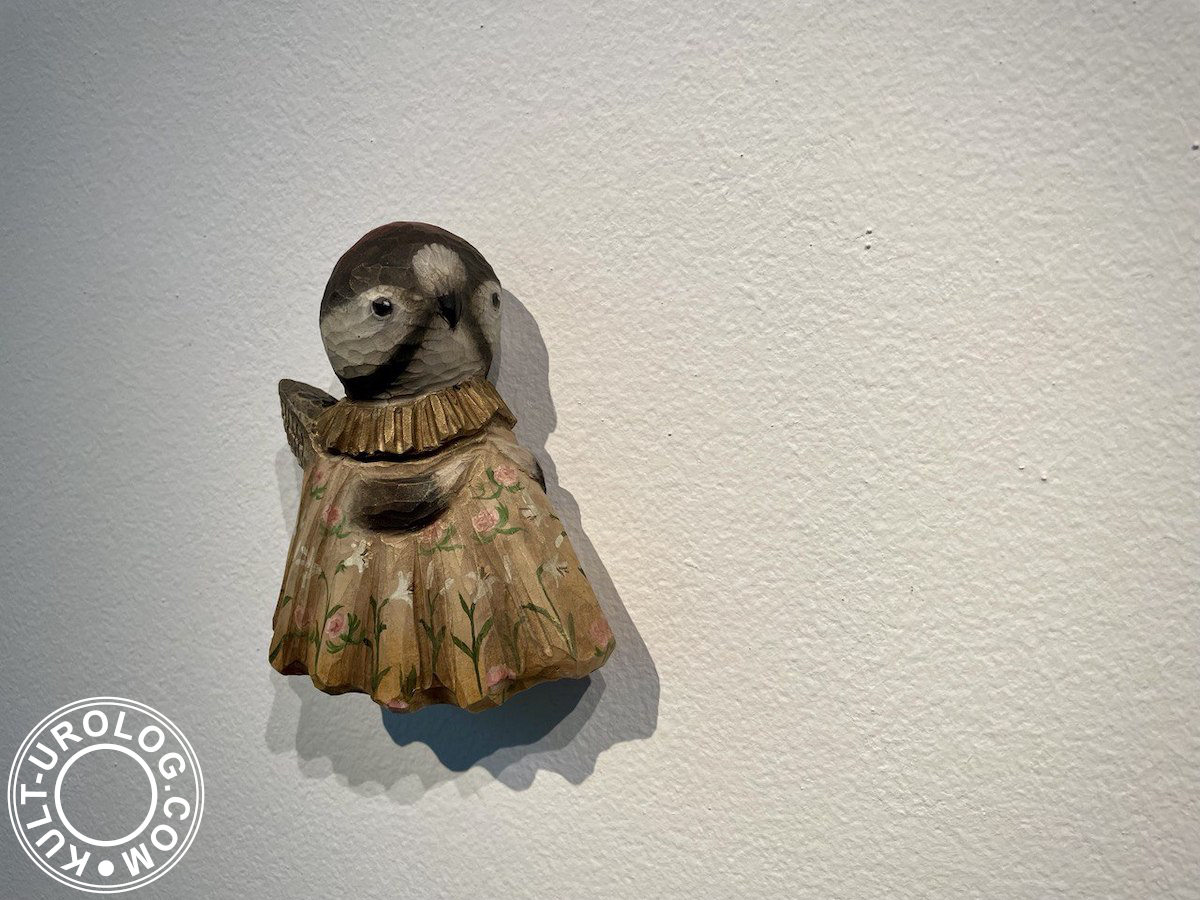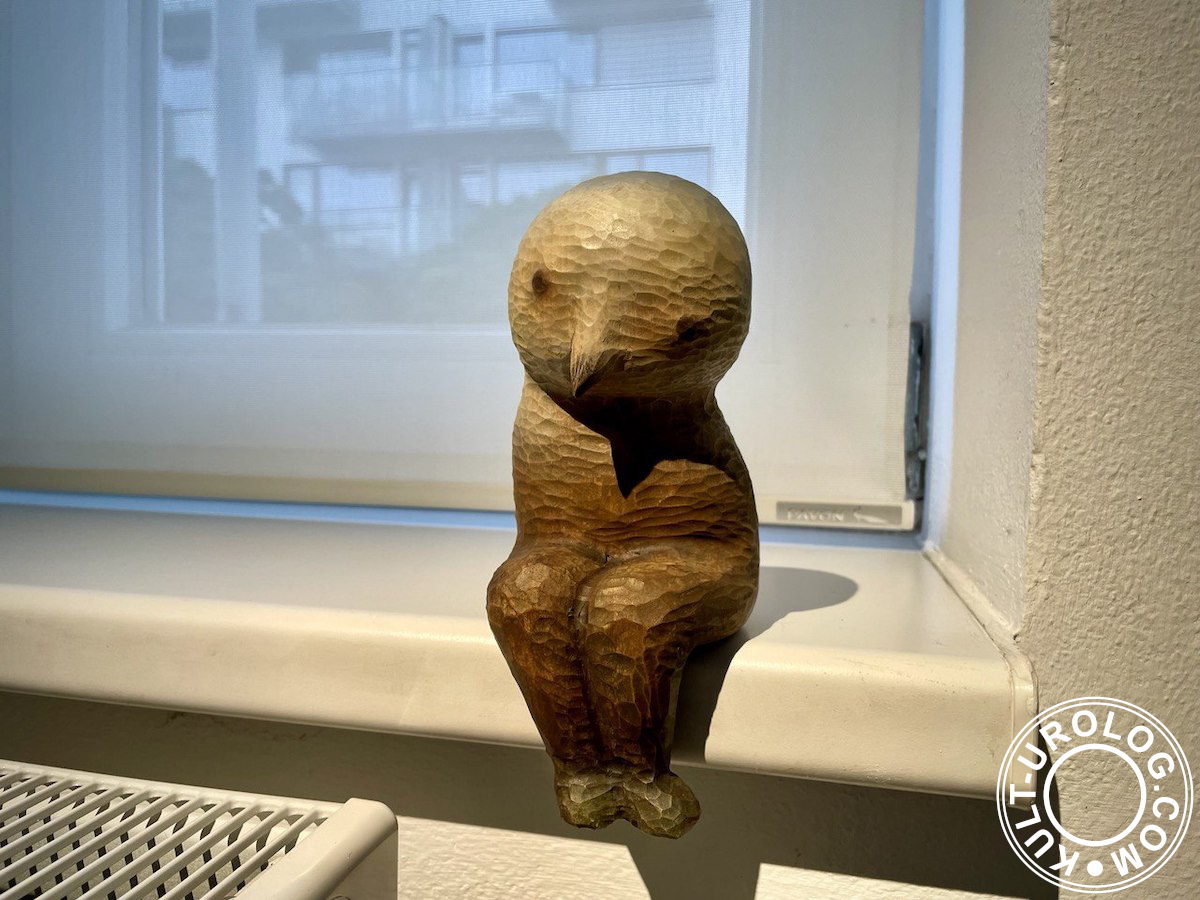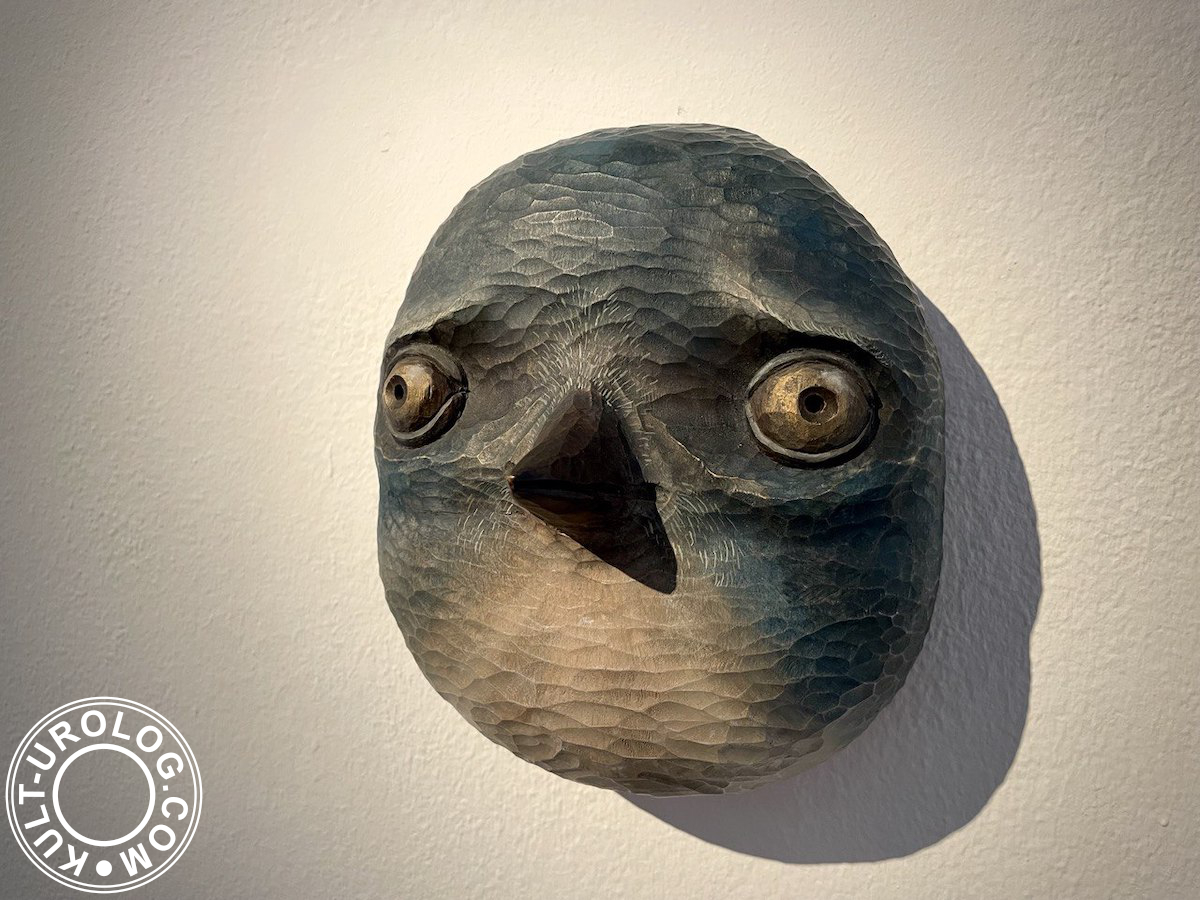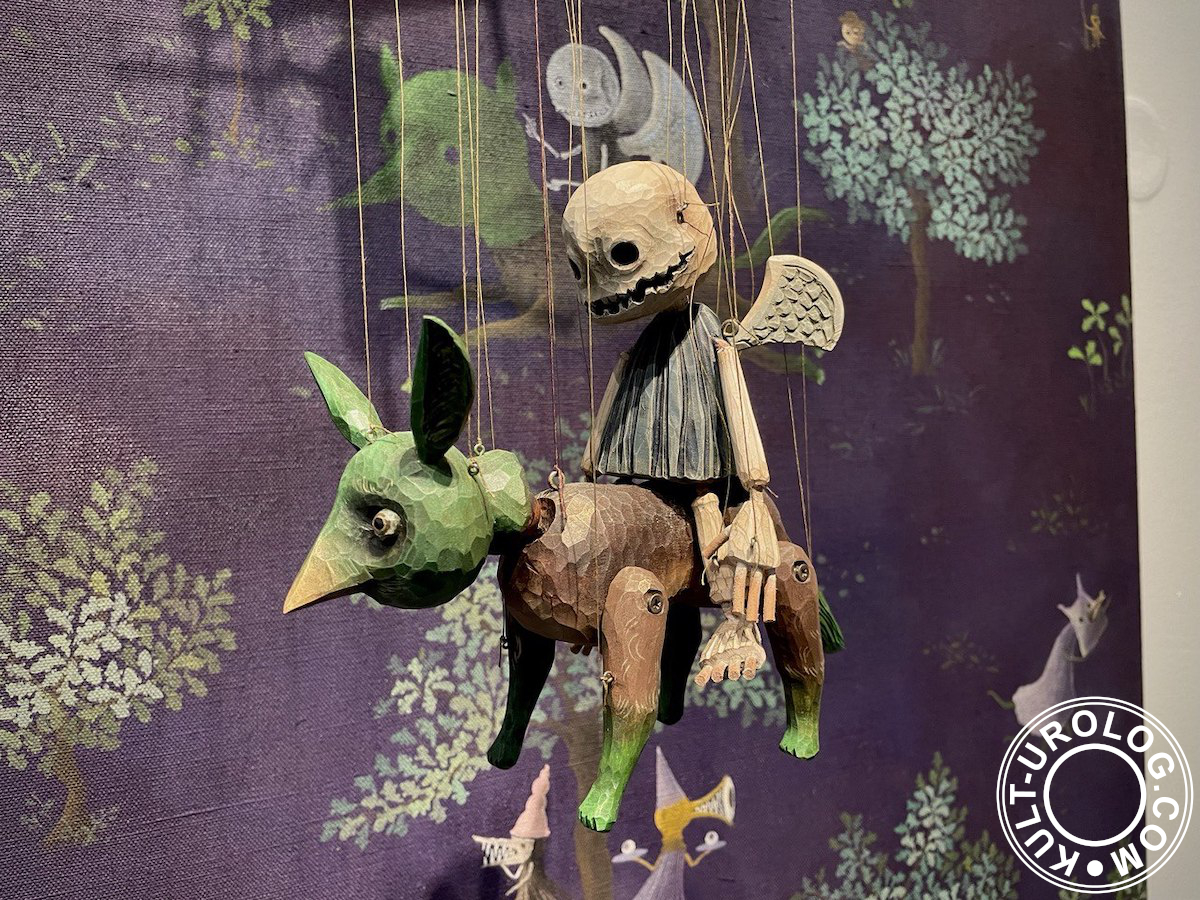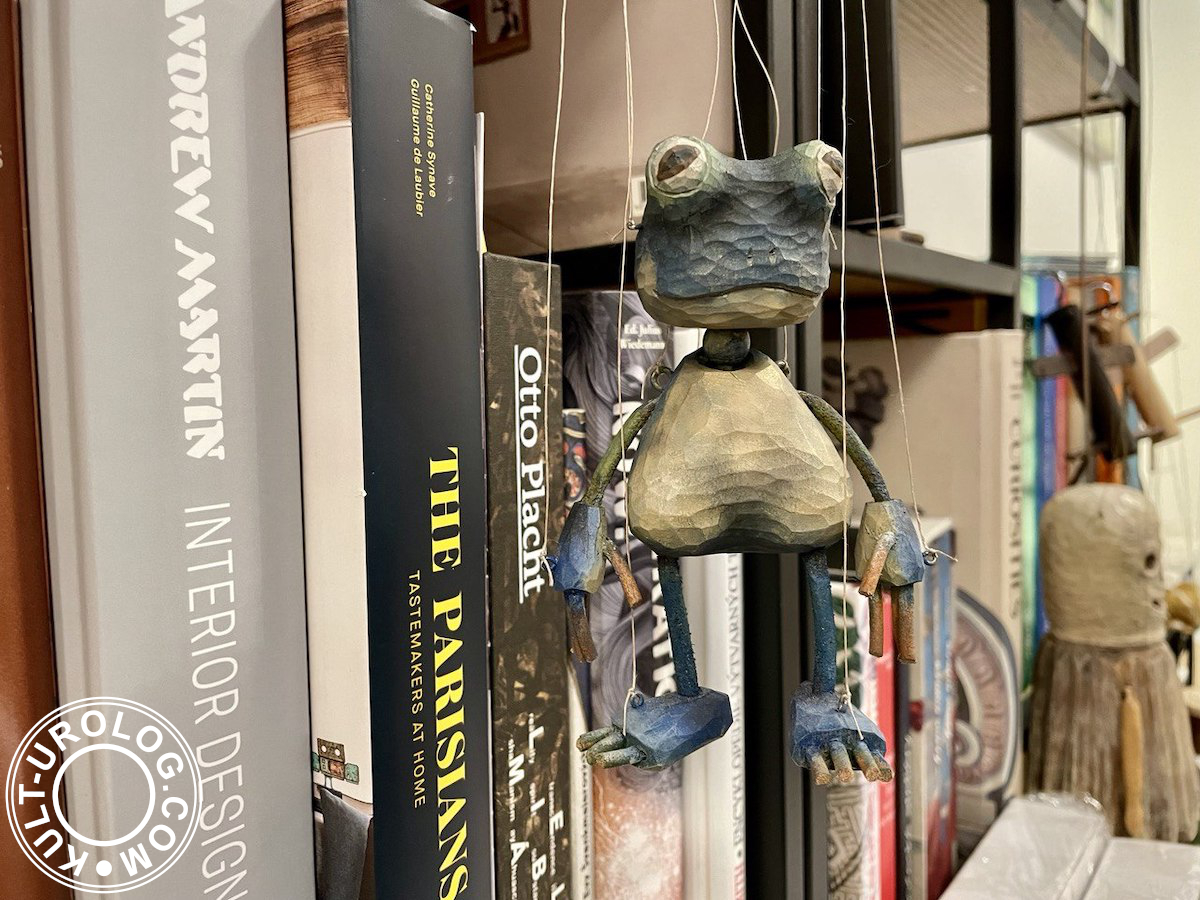Just a couple of weeks ago I was absolutely sure that I’ve changed my career aspirations forever and left all of the cultural studies for my immortal soul only, but, nope, I was wrong. Midlife crisis doesn’t necessarily ends with doll making, some habits are stronger than we think (though we can change an approach, for example). And since I have visited an exhibition and listened to a lecture, here is a text (with a very predictable title), and it is in English («I’ve suffered for my art, now it’s your turn»).
It is about Sota Sakuma’s exhibition The Wandering Forest (or «Bludný les», and the Czech version of the title sounds better, in my opinion), which you can visit till October, 12 at Bold Gallery in Prague.
The Wandering Forest was opened on September, 5, but we had to wait till our vacation begins to visit it, and the postponing was worth it, because we were lucky enough to get to meet the artist, the curator of the exhibition (Radek Wohlmuth) and even Eva Sakuma later.
Sakuma’s works have already been on display at Bold Gallery as part of other projects, but The Wandering Forest is his personal exhibition, the first for this art space and the first in the Czechia in general.
The exhibition is dedicated to paintings, but some characters seem to emerge from the canvas into the world as three-dimensional objects, so puppets and wooden figures complement certain compositions (there are even more puppets at the gallery offices, by the way, and also there are small Sakuma’s works on washi paper).
The wood, the colours, the textures and the cuteness of the little creatures make the exhibition space incredibly cosy.
It’s all about details (and details, and details…), color and texture.
Also, it’s all about the Japanese culture as well, and if you’re into it (and have seen a lot), the exhibition becomes an endless celebration of recognition, comparison and successful guessing — this is how the stepping into a comfort zone feels like (that’s why it is so hard to leave the gallery space by the time it closes).
This is a forest (or rather, Nature in general, but that part of the Nature that looks like a forest), it is very Japanese (Czech forests look different) and it’s not scary at all.
This is a forest where you can walk around, with no purpose and no map, just watching the life of its inhabitants and noticing only the change of time. Day turns to night and night turns to day, blue becomes gold, grey turns to white, and nothing is idle, everything moves and… exists.
The forest is more than inhabited, but the creatures that live there do not come into conflict with each other.
Everything here, from frogs and little dragons to Death and skulls, is kind, funny and cute (our beloved word «kawaii» describes it best). The skeletons look as delicate as the little sparrows.
Evil does not exist. Everything is in balance, and it should be so (personal conclusion, based on superficial knowledge of Japanese folklore and mythology).
Canvases do not necessarily hang where they are usually placed. Some of them are small, some are big, and the larger is the canvas (not necessarily, but in most cases), the more scenes of the life of forest creatures it contains (and their life is rich, so everything needs to be examined).
Compositions do not necessarily have horizon lines or symmetry. But who expects such things from Japanese art? Because, yes, it’s hard to define it otherwise, although much of it comes from the Czech environment.
It’s not the first time I write about Sakuma’s art (it’s the second one), and I have already mentioned Bosch and Bruegel motives, but now I also have to mention works of Czech animators. Jiří Trnka, for example, or Amanita Design (why not?). Because the environment makes an impact (at least to the beholder).
The Wandering Forest gives you an impression, that everything that you see now has already been seen before, but somehow forgotten, and now, when you meet it again, you get the priceless joy of recognition (although this is a gallery, and everything can not only be recognised, but also can be bought), and every character and small creature becomes a personal crush once and for all.
Here, everything that you have managed to learn about Japan (because the processing of heritage and, so to speak, cultural codes are an important part of the work), will be useful: from illustrations for The Tale of Genji to stories about yōkai or Kyōsai’s bestiary, from the dances of small creatures in Tove Jansson’s books (in this respect, the Finnish forest is very similar to the Wandering forest) to «the empty shell of cicada», from shinrin-yoku and hanami to The Legend of Zelda or Spirited Away and so on. And of course, you may have your own associations, and the more of them you’ve got, the more fun the exhibition will offer to you, and since there are no noticeable plates with names and descriptions nearby (red dots only), you are free to imagine anything that you wish or that you can.
But if these moss carpets and small petals guide you to something like The Lady and the Unicorn, there are reasons for this too.
Sota Sakuma studied textile design in Tokyo until he became fascinated by Czech puppets, which differed from Japanese ones (intended more for children) in that they resembled moving figures — that’s how he ended up in the Czech Republic, carving and creating his own animated figures since about the beginning of the 2000s. In 2020, when a lot suddenly changed for everyone, he took up painting and returned to an even earlier passion — nature (his first work wasn’t presented at the exhibition, but the second one — yes, and it was with an autograph in the corner, which distinguished it from other, later works).
Since there was no merch (although a postcard or a 3m x 3m poster wouldn’t have hurt), I had to leave the gallery with something way more sustainable: a desire to get one of the Sakuma’s puppets one day (maybe, if I will be lucky enough), because not only are they adorable, they are also truly alive (that rare case when a tree comes back to life after being cut down). Dreams, dreams… At least they’re good ones. Like the forest.

